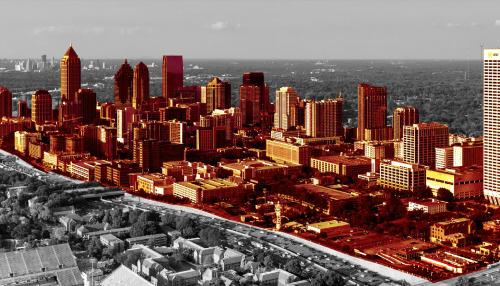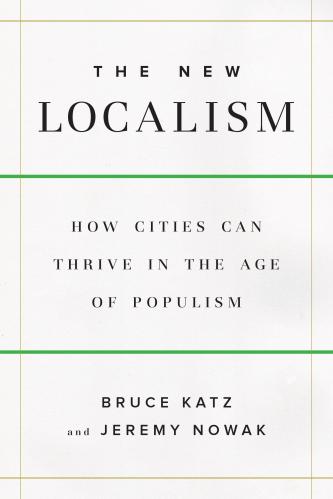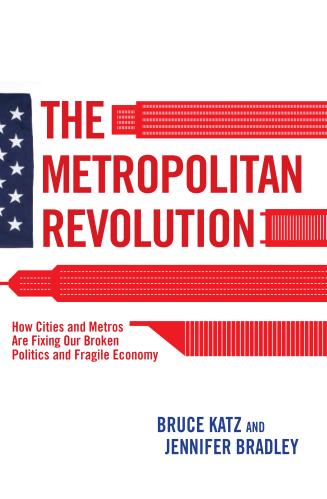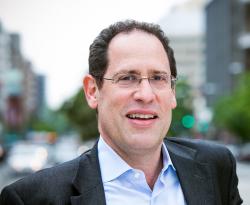This blog originally appeared in CityLab on Aug 6, 2017.
Americans who travel abroad sometimes wonder why many of our airports are lacking in comparison to the best international airports. Or they want to know why other nations seem to do a better job with public transportation and the management of other public assets, from ports to parks. The answers we are tempted to give are that we do not invest as heavily in public infrastructure as many other nations and that a market-oriented American ethos with an entrepreneurial culture prefers private solutions (cars versus trains) to public ones. These answers are certainly part of the story.
Far from being broke, many cities and counties have enormous untapped wealth, which could be used to finance not only infrastructure but investments in children and other critical needs.
There is a better way, teased out in detail and with great authority in The Public Wealth of Cities, a new book co-authored by Dag Detter and Stefan Folster, two Swedish experts in public finance. The pair have studied public asset management and are promoting a third alternative to political management or full privatization—public ownership that relies on professional, private-sector management.The book, a sequel to their 2015 The Public Wealth of Nations, reviews examples of how this is being done in cities like Copenhagen and Hamburg and city-states like Singapore—and why it should be done more extensively. The authors’ core argument is a disruptive idea in public policy that links management systems, public asset value, intelligent financing, and the proper role of politicians in a democracy. Their five key points:
- Value: In a world where we regularly are in awe of the financial power of private assets and capital markets, the public sector is still among the largest holders of wealth through real estate, transportation systems, utilities, government owned corporations, and sovereign wealth funds.
- Transparency: There are few nations or cities which are able to do a proper accounting of their collective assets and hence cannot detail to citizen shareholders the ownership value, the return on that value, and how it could potentially be restructured to be more productive. In the United States, incredibly, we know what governments owe but not what they own.
- Return Opportunity: A relatively small increase in the return on public assets would contribute significantly to revenue that supports the public sector and hence lessens the need to raise taxes while increasing the likelihood of new investments in things such as infrastructure.
- Politicians versus Public Management: The removal of the political class from public asset management has a salutary effect on democracy: It turns politicians from asset gatekeepers to consumer and citizen advocates on behalf of public asset productivity and quality.
- Mechanisms: We have sufficient global examples and technical expertise to help guide the transition from political management to professional asset management with stronger economic and social impacts.
These five observations and ideas—simple in design but difficult to execute—change the focus of public asset management by placing the emphasis on the quality of governance and the focus on extracting public value from the significant value created by the public.
The power of this model can be seen in Copenhagen. There, the government transferred the land and buildings it owned in the old industrial harbor to a publicly owned, privately driven entity—the Copenhagen City & Port Development Corporation. The corporation (as detailed in a recent Brookings case study) then used smart asset management and disposition, enabled by strategic zoning changes, to spur the large-scale regeneration of the waterfront and the financing of a citywide transit system—all without raising taxes. This public/private corporate model combines the efficiency of market discipline and mechanisms with the benefits of public direction and legitimacy, and it helped spur the remarkable transformation of Copenhagen from an ailing former manufacturing city to one of the wealthiest and most sustainable cities in the world.
But adapting the Copenhagen model to the United States will take some work. To do so, we would need to know exactly what a municipality, county, or state owns. Then we’d have to determine the market value of those assets and what the best uses of them are in terms of overall private and public strategy. We also have to separate out commercially valuable assets with those public goods that cannot and should not be monetized, such as government buildings, streets, and public spaces. And we will need either to create new publicly owned holding companies or align the assets of disparate public authorities for greater impact.
The good news: Our city and county elected officials already control many of the public authorities that have vast real estate holdings or other operational responsibilities. An asset mapping exercise will reveal fairly quickly that there is enormous opportunity for a smarter use of public assets in the cores of cities around anchors like waterfronts and research institutions, where residential, commercial and company growth has been particularly strong since the end of the recession. Mayors and county executives have the power not only to compel authorities to work in tandem but to ensure that revenue flows are marshaled for the big investments that matter.
The Public Wealth of Cities is one of those rare books that match the urgency of our times with practical, actionable solutions. With Washington in utter chaos and most states hostile, our major cities, counties and metropolitan areas are now primarily responsible for financing the future through investments in infrastructure, education and children. As traditional fiscal options are limited, Detter and Folster contend provocatively that cities have vast public wealth that can be put to productive use. They offer a contrarian path forward that is not only smart and sensible, but tried and tested.










Commentary
The Untapped Wealth of American Cities
August 17, 2017